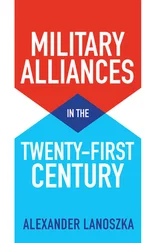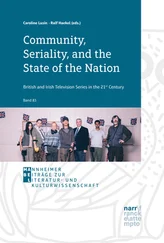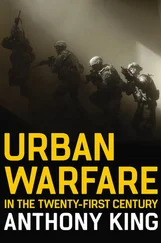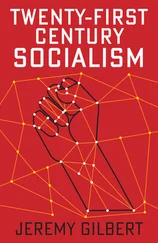The Indian state is no stranger to political violence within its territory, and it has evolved a very effective technique of dealing with it — combining ruthless law and order tactics with completely open cooptation into the democratic space. The former gives those using violence a disincentive to continue doing so; the latter gives them a positive reason to give up the gun in order to seek their objectives by other means. This has worked in places as far apart as Punjab and Mizoram, so that yesterday’s terrorists become today’s political candidates, tomorrow’s chief ministers, and the day after tomorrow’s leaders of the opposition, those being the vagaries of democracy.
But when you are talking about terror coming from across the border, those options are not available. The terrorists are not people who are seeking a ventilation of political grievances. These are not people who are coming to Mumbai because they want to have their space in making decisions about the country, the community, the future, whatever. These are people coming, unfortunately, with no objective other than destruction. Their objective is to sow terror and fear. And that is very different from the other kinds of terrorism India has dealt with domestically.
When these twenty young men set sail from Pakistan to wreak the havoc they did in Mumbai, I do not know how many of them realistically thought they would ever get back. But clearly, they had no political objectives beyond the undermining of India. They were not asking for the release of imprisoned terrorists. They were not asking for a change of government. They were not seeking anything other than to cause as much damage and death and destruction as possible, perhaps in order to provoke a war between India and Pakistan that would take the heat off Al Qaeda in Pakistan. For them to pretend to be standing up for the cause of Islam, when they killed forty-nine innocent Muslim civilians in the city of Mumbai, would be a travesty of anything that Islam stands for.
It is difficult to escape the conclusion that this kind of terrorism — terrorism as an end in itself, not as a means to something larger — can only be confronted implacably. There is no co-optation formula available. It just has to be nipped in the bud, ideally before it starts, and if that is not possible in its home base, deal with it firmly if and when it actually occurs.
It is fair to ask why 26/11 is the singular event that overwhelms the debate. Why does it overshadow the four wars, and even the preceding twenty years of terrorist support? The answer lies partly in its proximity: just over three years have passed since 26/11 as these words are written, and it looms large still, whereas the formal wars seem to belong to the history books, and the earlier terrorist blasts have been relegated to the footnotes. There is, of course, the continuing danger that 26/11 implies: this mutant species of political violence now offers a copybook template to any future terrorist group. More vital, though, is its intimate immediacy in a psychological sense. As the American novelist Don Delillo has written about terror attacks after 9/11: ‘This catastrophic event changes the way we think and act, moment to moment, week to week, for unknown weeks and months to come, and steely years. Our world, parts of our world, have crumbled into theirs, which means we are living in a place of danger and rage.’ The ‘livestreaming’ of the violence has brought about a new auditory and visual experience, as terrorism has been brought into the homes and living rooms of ordinary citizens by the ubiquity of contemporary mass media. Our policy-making machinery must learn to channel this sense of danger, this rage that seethes within, without letting our foreign policy be held hostage to 26/11.
It is fair to point out that since then Pakistan’s own internal security has been racked by bouts of large-scale suicide attacks, bomb blasts and commando-style operations attacking army and naval bases. The ISI’s response to these has revealed the ambivalence at the heart of its sadomasochistic relationship to terrorism: it suffers the whiplash of the very pain it seeks to inflict on others. Many close observers see in the ISI’s actions a curious inward-looking organizational culture, characterized by small-minded hubris, tactical cleverness, bureaucratic self-preservation and wilful ignorance about genuine long-term security needs, all inflated by pretensions of historical grandeur. The entire enterprise is sustained in an establishment rhetoric couched in military and religious vocabulary, with grandiose strategic ambitions advocated largely by ex-military men who should know better, given Pakistan’s multiple defeats at the hands of India. New Delhi can shake its head at this phenomenon, but it cannot afford either righteous rage or weary resignation in the face of such fundamental (and fundamentalist) hostility. It must remain vigilant even as it seeks to pursue an honourable peace.
Before concluding this section of our analysis, let me return to where I began, at the Gateway of India. Inevitably, after 26/11, the questions began to be asked abroad: ‘Is it all over for India? Can the country ever recover from this?’
Of course, the answers are no and yes, but outsiders cannot be blamed for asking existential questions about a nation that so recently had been seen as poised for take-off. In the wake of the attacks, foreign tourists cancelled reservations in Indian hotels hundreds of miles from Mumbai, and some potential investors in the Indian economy delayed their investment-related plans and visits after seeing attacks upon hotels frequented by international businessmen. While these overreactions, given time, did subside, India has not fully returned to being the economic lodestar it once was in the eyes of international business, at least partly because of the ever-present threat of random violence. Two subsequent bomb blasts in Mumbai and one each in Pune and Delhi, though on a much smaller scale than 26/11, have served as reminders of that possibility.
India can recover from the physical assaults against it. It is striking that both the assaulted hotels, the Taj Mahal and the Trident, reopened their doors within a month of the terrorist attack. We are a land of great resilience that has learned, over arduous millennia, to cope with tragedy. Within twenty-four hours of an earlier Islamist assault on Mumbai, the Stock Exchange bombing in 1993, Mumbai’s traders were back on the floor, their burned-out computers forgotten, doing what they used to before technology had changed their trading styles. Bombs and bullets alone cannot destroy India, because Indians will pick their way through the rubble and carry on as they have done throughout history.
But what can destroy India is a change in the spirit of its people, away from the pluralism and coexistence that has been our greatest strength. The prime minister’s call for calm and restraint in the face of this murderous rampage was heeded; the masses mobilized in candelight processions, not as murderous mobs. My big fear was that political opportunism in a charged election season could have led to some practising the politics of hatred and division. Indeed, I wrote while the attacks were still going on that ‘if these tragic events lead to the demonization of the Muslims of India, the terrorists will have won’. I am heartened that instead Indians stayed united in the face of this tragedy. The victims included Indians of every faith, including forty-nine Muslims out of the 188 killed. There is anger, some of it directed inward, against our security and governance failures, but none of it against any specific community. That is as it should be. For India to be India, its gateway — to the multiple Indias within, and the heaving seas without — must always remain open.
Читать дальше












